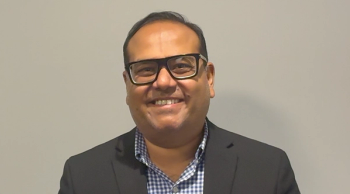
Patterns of Recurrence Differ by Breast Cancer Node-Negative Subtype
A study defining patterns of recurrence in node-negative breast cancer patients could help guide surveillance recommendations and future therapeutic approaches.
Results of a recent study have helped define patterns of distant recurrence experienced by women with different subtypes of node-negative breast cancer over time-information that, according to the researchers, can help guide the development of surveillance recommendations and future therapeutic approaches.
“Genomic studies have defined four-major intrinsic [breast cancer] subtypes: basal-like, which is mainly represented by triple-negative [breast cancer] (estrogen receptor [ER] negative, progesterone receptor [PgR] negative, and HER2 negative); luminal A, represented by hormone receptor–positive tumors with low proliferative activity; luminal B, also mainly represented by ER-positive tumors but with high proliferative activity; and HER2-positive, represented by tumors with high expression of the ERBB2 gene,” wrote the researchers, led by Otto Metzger-Filho, MD, of the Dana-Farber Cancer Institute.
However, despite this increased knowledge of the heterogeneous diseases subsets, there is still little knowledge available about patterns of disease recurrence for each subtype.
To examine these patterns further, Metzger-Filho and colleagues collected data on 1,951 women with node-negative breast cancer from the International Breast Cancer Study Group Trials VIII and IX. Women included had undergone pathologic review and had their breast cancers defined as triple negative (n = 310), HER2 positive (n = 369), or hormone-receptor positive with high luminal B–like proliferative activity (LB-like; n = 763) or low luminal A–like activity (LA-like; n = 509).
The researchers followed the patients for a median of 12.5 years and were looking at breast cancer free interval (BCFI) events including invasive breast cancer recurrence at various sites. The
At 10 years, the rate of BCFI events and overall survival significantly differed according to subtype. Women with LA-like disease had a 10-year BCFI of 86% compared with 76% for LB-like, 73% for HER2, and 71% for triple negative (P < .001). Women with LA-like disease also had the highest overall survival rate at 10 years (89%) compared with LB-like (83%), HER2 (77%), and triple-negative subtypes (75%; P < .001).
In addition, women with triple-negative disease or HER2 disease had a higher hazard for a BCFI event during the first 4 years after diagnosis with disease. Those women with LB-like disease had a consistently higher hazard than women with LA-like disease.
The researchers also looked at patterns of recurrence by site and found that the 10-year cumulative incidence of bone recurrence in women with LB-like disease was more than double that of all the other subtypes (P = .005). However, women with HER2 disease had the highest rate of visceral recurrence at 10 years (11.36%) compared with triple-negative (7.82%), LB-like (7.98%), and LA-like patients (2.88%; P = .003).
“Our retrospective results, based on a reanalysis of tumor phenotype, reinforce the need for long-term clinical follow-up in order to understand the pattern of recurrence of [breast cancer] subtypes,” the researchers wrote. “However, results based on long-term follow-up can lead to the inclusion of patients treated in a noncontemporary fashion, which limits inferences on the effect of modern treatment approaches.”
Newsletter
Stay up to date on recent advances in the multidisciplinary approach to cancer.





















































































